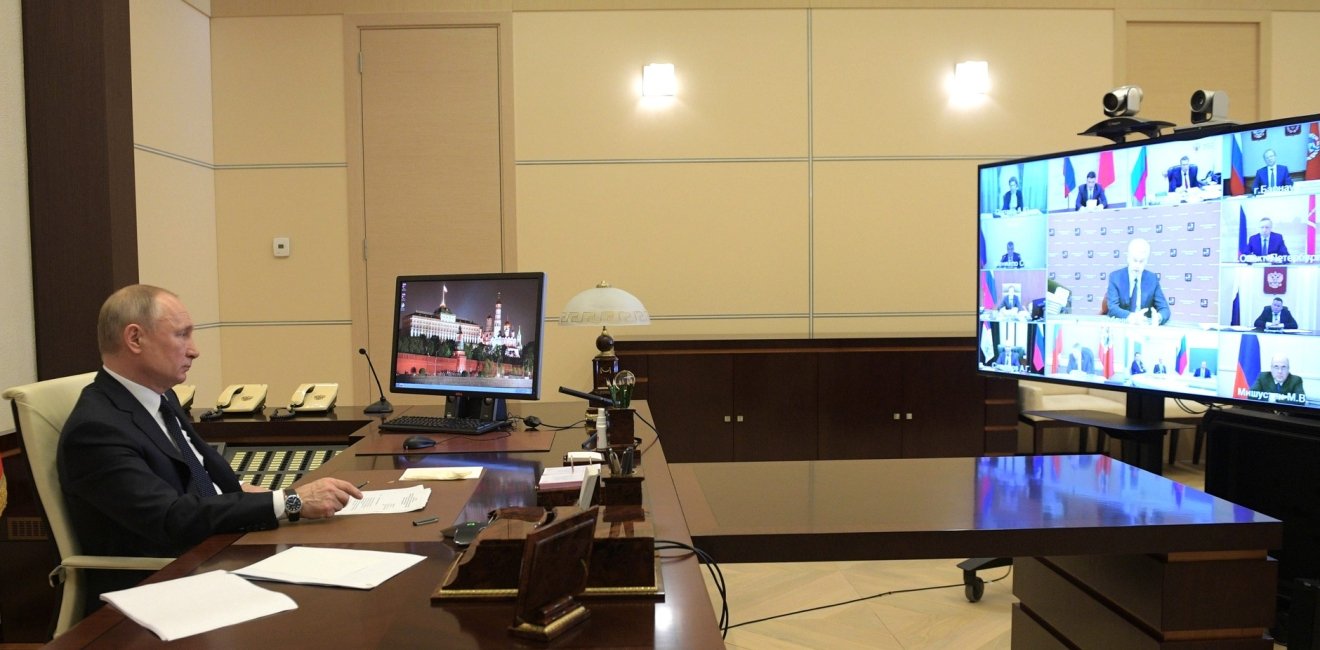
A blog of the Kennan Institute
BY VICTORIA PARDINI
Reported cases of COVID-19 have exceeded 55,000 in Moscow and St. Petersburg. However, one of Russia’s more remote regions has surprisingly emerged as one of the first regional epicenters of the pandemic—the Komi Republic. Moscow’s response to the regional government apparently shrugging off the major health threat to the population suggests that at least for now, the Kremlin wants more competent people in positions of regional leadership—even among those it has elevated to such positions.
Located in the northwest of Russia, the Komi Republic boasts a relatively robust industry, with a GDP comparable to that of the Netherlands. It is a major producer of oil and natural gas, as well as timber and electric power. A relatively young region, the republic was settled in the twentieth century as a northern gulag.
Although its population is only about 820,000, the republic has recorded a startling 590 confirmed cases of COVID since March 24. Until mid-April, it was the first epicenter of the virus outside of Moscow and St. Petersburg and reported the highest number of cases in the regions. According to early reports, the virus emerged at a hospital in the Ezhva District of Syktyvkar, the republic’s capital, located more than 800 miles from Moscow. Though unconfirmed, the initial spread of the virus in the region is attributed to a “superspreader,” an infected doctor in the hospital, transmitting the virus. The hospital was quarantined, and forty-eight cases were reported. Since then, five other hospitals have been quarantined in the city. As of this report, the virus has been detected in nearly every district in the republic.
The case of the Komi Republic sheds light not just on how the virus has spread outside the heavily populated centers of Russia but also on some of the realities of regional governance, transparency, and health care resources in Russia’s regions.
On April 2, Sergey Gaplikov, the governor of the Komi Republic since 2015, resigned. He was replaced by Vladimir Uyba, who had been Russia’s deputy minister of health since January. Prior to that, Uyba was head of the Federal Medical Biological Agency, the national public health agency of Russia.
Gaplikov’s resignation and Uyba’s appointment as governor were clear signals from the Kremlin that the federal government was taking steps to decrease the infection rate and that the new leadership was expected to tamp down the problem. The political transition also brought to light critical fault lines in the regional government.
Like many regional governors appointed by the Kremlin, Gaplikov, an outsider, never earned the trust or confidence of many residents of the region. He was viewed as a Kremlin bureaucrat, having previously held positions in the Russian government and with Olimpstroi, a state corporation that ran construction projects leading up to the Sochi Olympics. According to Leonid Zilberg, publisher of the independent regional news website 7x7, Gaplikov’s biggest success was paying little attention to the problems of the region and focusing more on the wishes of Moscow. As a result of Gaplikov’s lack of attention to the region, however, pressure was lessened on media outlets and national organizations alike to operate more freely.
Though the region grappled with the problem of the flight of young people in search of better opportunities elsewhere and with inadequate social benefits, the flashpoint in the public’s dissatisfaction during Gaplikov’s five-year tenure came with his handling of the huge Shies landfill. The proposed dumpsite, created on the border of the Komi Republic and Arkhangelsk oblast to handle municipal waste from Moscow, drew steady protests all over northwestern Russia from the start of the project in 2018. Gaplikov deemed the protests a waste of time and forged ahead with the project, despite an outcry from environmental activists.
Since Gaplikov’s resignation, his government has also started to crumble, as the regional Minister of Health Dmitry Berezin resigned on April 9. Prior to Berezin’s resignation, he filed a series of complaints with the Ministry of Internal Affairs in which he referenced posts on social media criticizing the regional government’s slow response to the pandemic and the lack of transparency on the part of the government.
Indeed, lack of transparency with respect to the facts of the pandemic and the region’s failure to take it as a serious threat were major problems paving the way to Gaplikov’s resignation. Officials stopped commenting on the situation by phone on March 25, and the state news agency limited reports on statistics related to the pandemic in the region. The first death attributed to coronavirus in the region was reported by an outside organization on social media before it was confirmed by the government.
The situation is compounded by the lack of health care infrastructure in the Komi Republic, though it is not unique among Russia’s regions in this respect. In response to the spread of the virus in the republic, the regional government purchased additional ventilators and brought in specialists from St. Petersburg and Arkhangelsk to fill vacancies among doctors trained to treat the virus. Yet the vast outbreak in the republic is a strong indicator of how ill-prepared the regions are to handle a pandemic of this nature, just as new outbreaks are reported in other remote oblasts, such as Murmansk.
Although the pandemic is still very much ongoing, the Kremlin’s handling of the situation in Komi has lessons for the other regions.
Were it not for the pandemic, it is unclear whether the Kremlin would have pulled Gaplikov from his post prior to the 2020 gubernatorial elections, despite his unpopularity. On the same day that Gaplikov resigned, similarly unpopular governors in Arkhangelsk and the Nenets Autonomous Region resigned, though the numbers of infected persons are much lower there than in Komi.
It is too early to tell whether the pandemic represents a turning point in how the regions are governed. At this point, cities in the republic are working to manage the crisis, and four major cities have been closed off to prevent further spread.
The change in governors in Komi was the Kremlin’s attempt at crisis management. The pandemic in Komi presented the Kremlin with a unique escape hatch to solve a leadership problem, the weakness of which was magnified by a nationwide issue. The case of Komi might signal the start of a shift toward the Kremlin wanting more skills from regional leaders than simply toeing Moscow’s line.
More likely, however, once there is an end in sight to the crisis, the Band-Aid measures taken to ensure steady leadership and focused action in distant and low-populated regions like the Komi Republic will return to normal. The moves made by the federal government were in reaction to the situation. At this stage, no firm steps have been taken to improve the cracking infrastructure of the region or to tackle local problems before the next crisis.
The opinions expressed in this article are those solely of the author and do not reflect the views of the Kennan Institute.
Author


Kennan Institute
After more than 50 years as a vital part of the Wilson Center legacy, the Kennan Institute has become an independent think tank. You can find the current website for the Kennan Institute at kennaninstitute.org. Please look for future announcements about partnership activities between the Wilson Center and the Kennan Institute at Wilson Center Press Room. The Kennan Institute is the premier US center for advanced research on Eurasia and the oldest and largest regional program at the Woodrow Wilson International Center for Scholars. The Kennan Institute is committed to improving American understanding of Russia, Ukraine, Central Asia, the South Caucasus, and the surrounding region through research and exchange. Read more

Explore More in The Russia File
Browse The Russia File
Chechnya as a Model of Modern Russia

Russia’s Indigenous Communities and the War in Ukraine

Gas and Power in a Changing US–Russia Relationship

